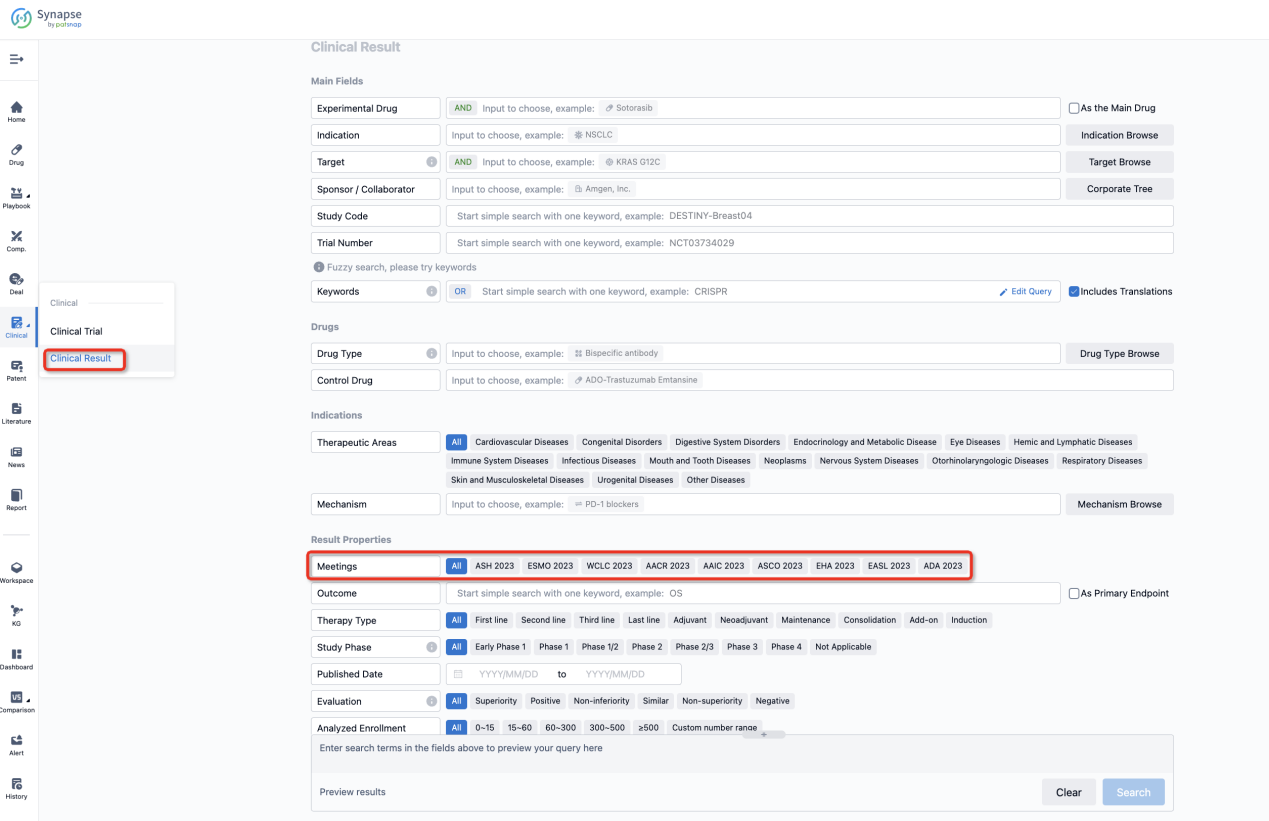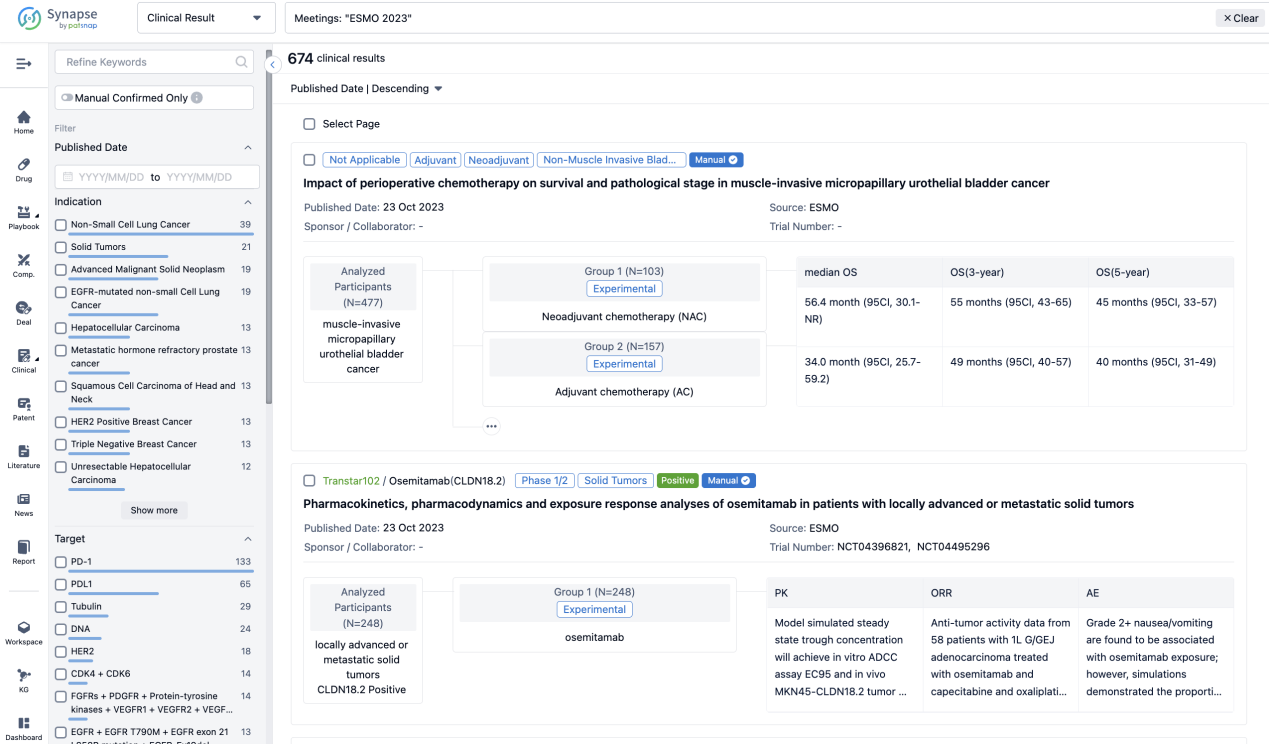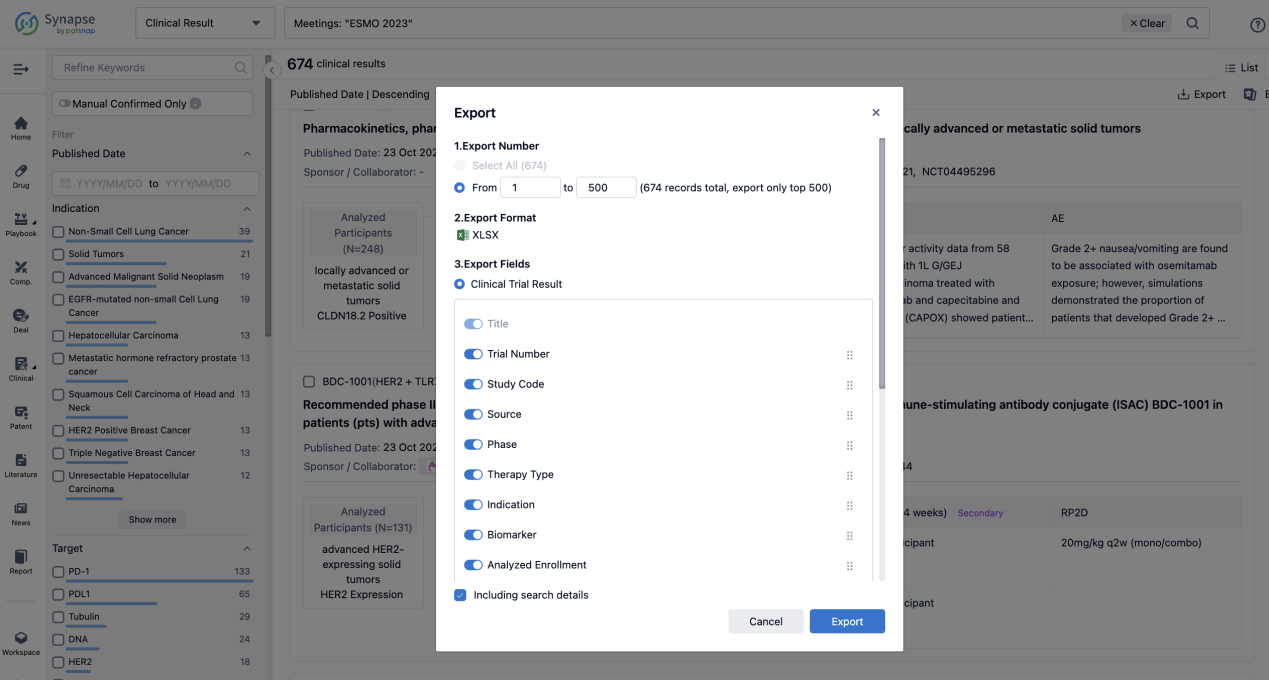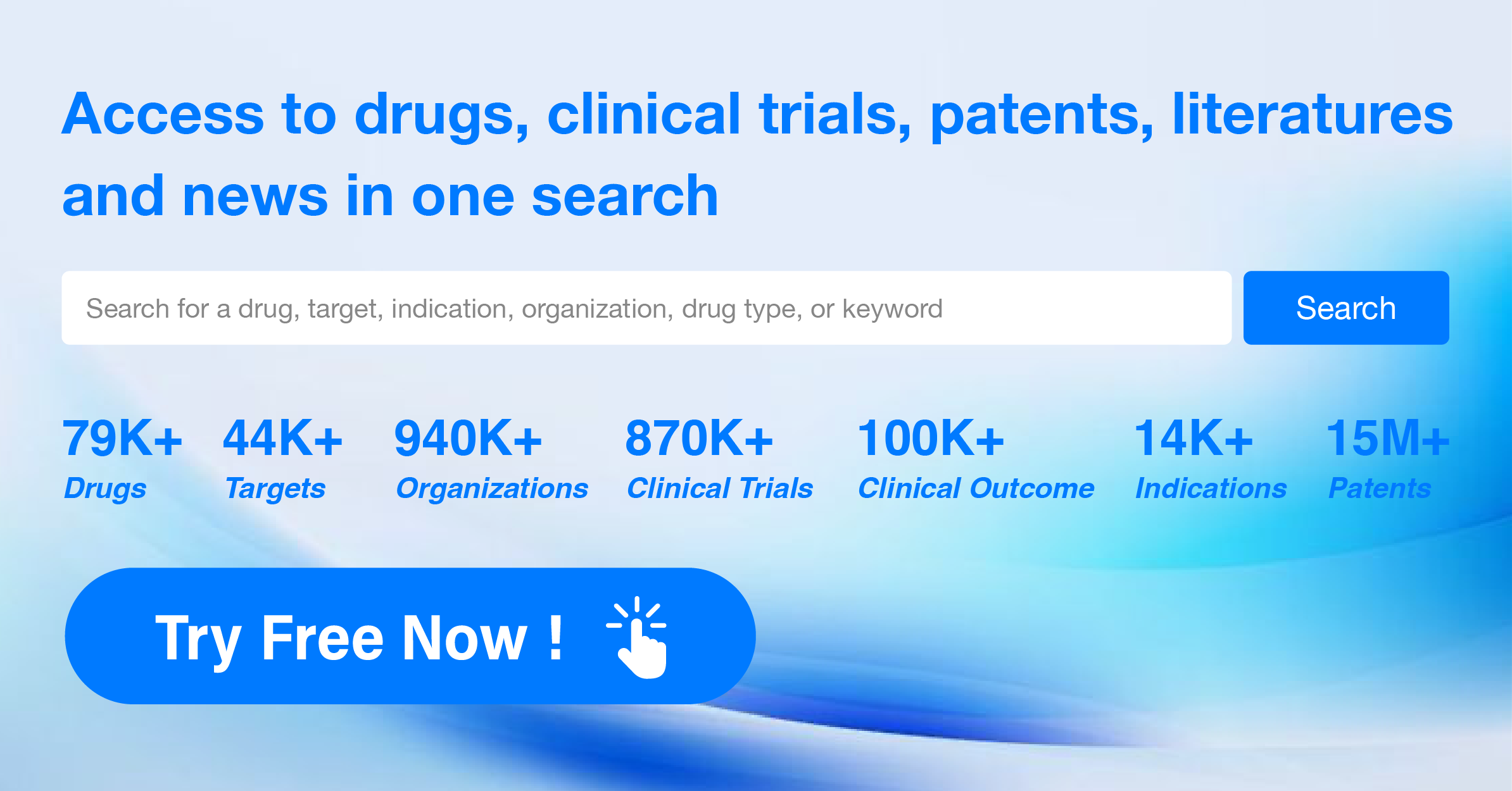Cadonilimab: brief review of its R&D progress and the clinical result in 2023 ESMO
Immunotherapy, targeted therapy and their combination has been developed as first-line treatment for advanced HCC. The combination therapy has improved the antitumor effects compared with targeted therapy, but tended to have higher incidence of adverse reactions. On 23 Oct 2023, the phase Ib/II clinical trial result of Cadonilimab combined with lenvatinib for first-line treatment of advanced hepatocellular carcinoma was reported at the ESMO Congress.
Cadonilimab's R&D Progress
Cadonilimab is a bispecific antibody drug that targets CTLA4 and PD-1. It has been approved for use in various therapeutic areas including neoplasms, digestive system disorders, skin and musculoskeletal diseases, respiratory diseases, urogenital diseases, immune system diseases, endocrinology and metabolic disease, hemic and lymphatic diseases, mouth and tooth diseases, and otorhinolaryngologic diseases.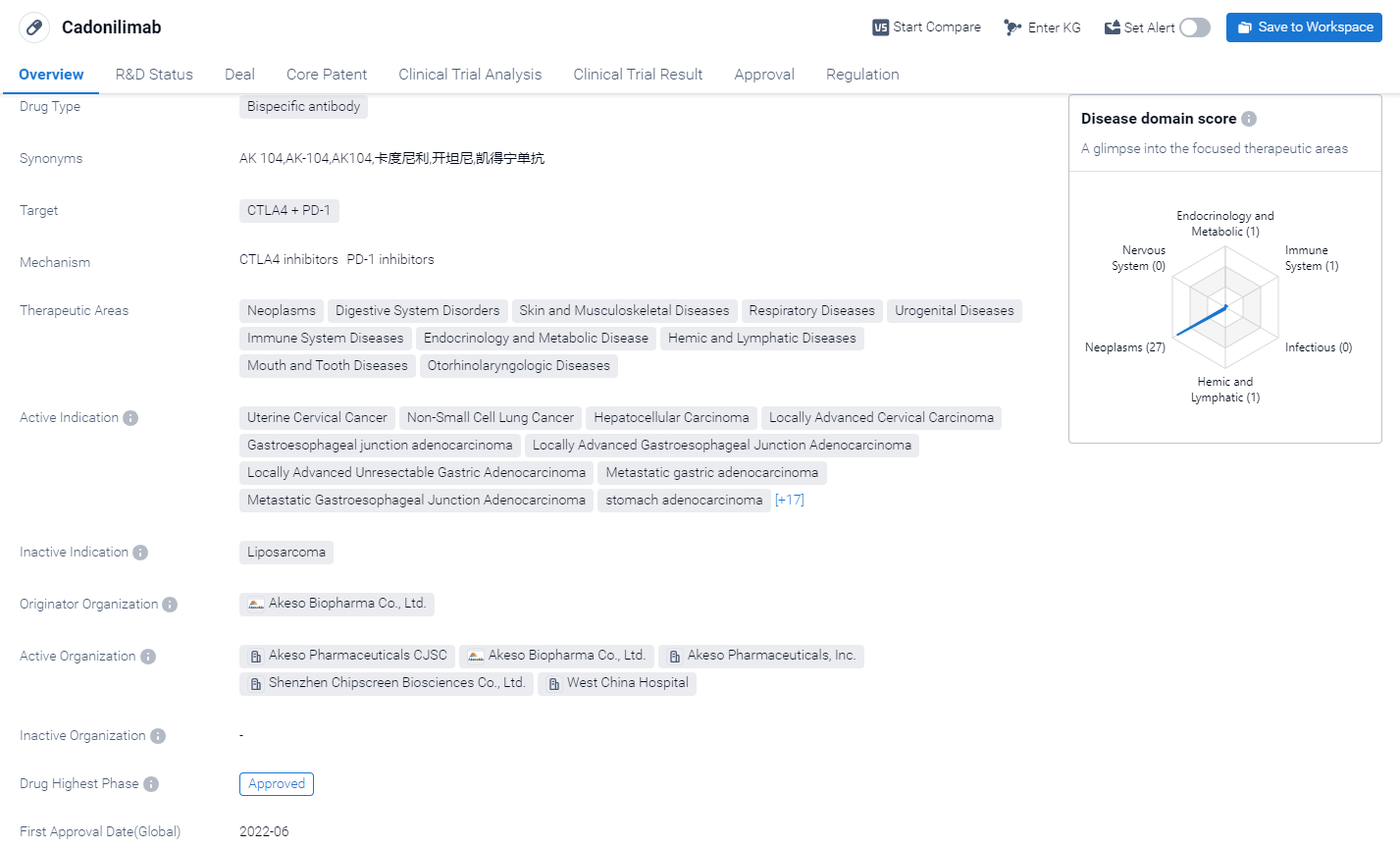
According to the Patsnap Synapse, Cadonilimab was developed by Akeso Biopharma Co., Ltd. and has received approval in the global market. And the clinical trial areas for Cadonilimab are primarily in China, Australia, and United States. The key indication is Advanced Hepatocellular Carcinoma.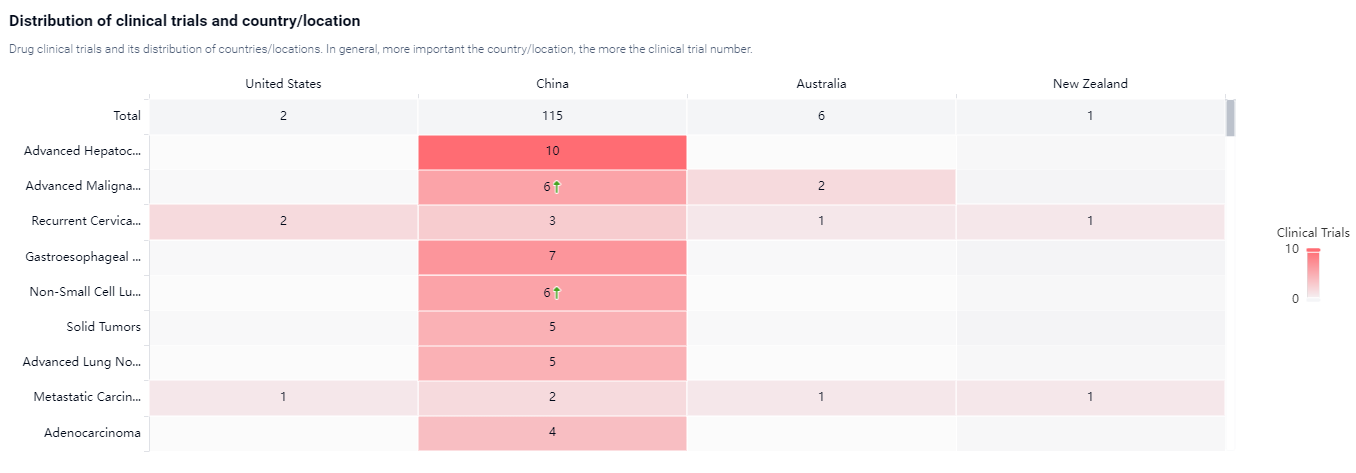
Detailed Clinical Result of Cadonilimab
This multicenter, open-label, phase Ib/II study (NCT04444167) was aimed to assess the efficacy and safety of Cadonilimab, a humanized, tetravalent, bispecific antibody targeting PD-1 and CTLA-4,with lenvatinib(len) in first-line treatment of HCC.

In this study, patients with histologically or clinically confirmed unresectable HCC receive either 6mg/kg Cadonilimab every 2 weeks plus len(cohort A) or 15mg/kg Cadonilimab every 3 weeks plus len(cohort B). The primary endpoint was objective response rate (ORR) by RECIST v1.1, the secondary endpoint includes safety, progression-free disease (PFS), overall survival (OS), disease control rate (DCR), duration of response (DoR) and time to response (TTR).
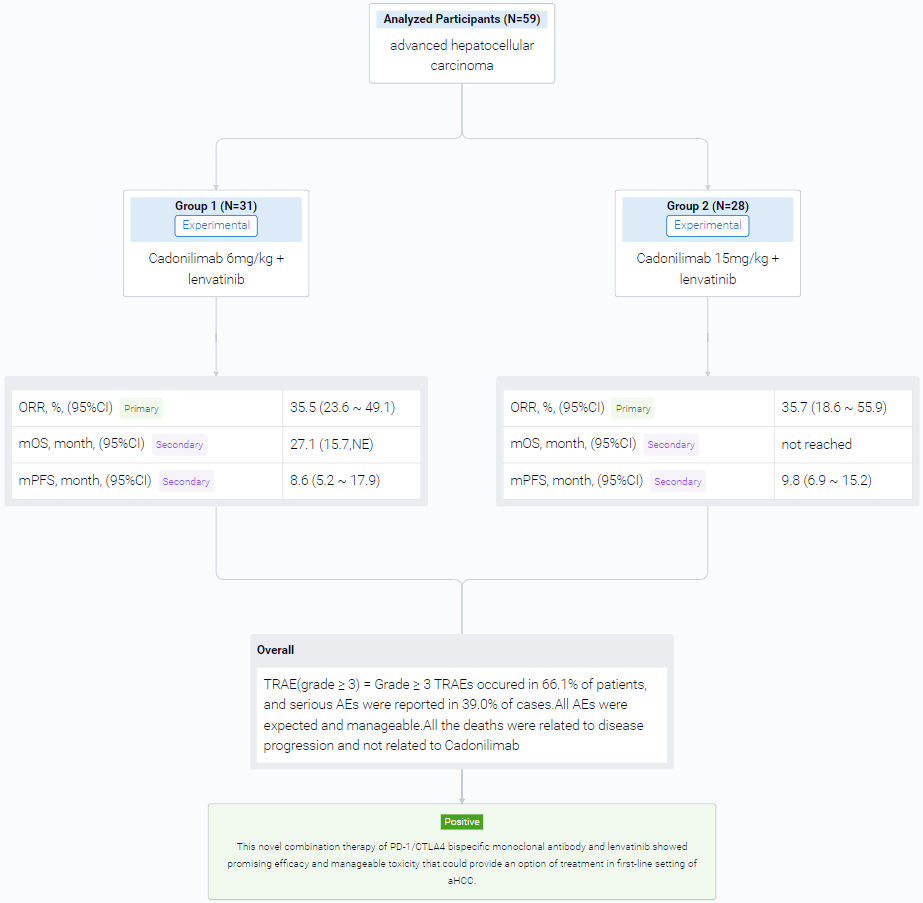
The results showed that the objective response rate (ORR) was 35.5% in cohort A and 35.7% in cohort B. The disease control rate was 90.3% in cohort A and 92.9% in cohort B. The median time to progression (mTTP) was 2.8 months in cohort A and 1.4 months in cohort B. The median duration of response (mDOR) was 13.6 months in cohort A and 13.7 months in cohort B. The median progression-free survival (mPFS) was 8.61 months in cohort A and 9.82 months in cohort B. The median overall survival (mOS) was 27.1 months in cohort A and was not reached in cohort B. Grade ≥3 treatment-related adverse events (TRAEs) occurred in 66.1% of patients, and serious adverse events (AEs) were reported in 39.0% of cases. All AEs were expected and manageable. All deaths were related to disease progression and not related to Cadonilimab.
It can be concluded that This novel combination therapy of PD-1/CTLA4 bispecific monoclonal antibody and lenvatinib showed promising efficacy and manageable toxicity that could provide an option of treatment in first-line setting of aHCC.
How to Easily View the Clinical Results Using Synapse Database?
If you want to know the other clinical results of popular conferences, please lick on the “Clinical Results” on the homepage of Patsnap Synapse, which provides multi-dimensional screening and filtering of drugs, indications, targets, companies, result evaluation, release date, popular conferences, etc. to help you quickly locate the data you need.
Select the clinical meeting you are interested in, such as ESMO. In the results, you can quickly locate the data you want to view by indication, phase and drug name.
A single result clearly shows important information such as registration number, phase, indication, Sponsor/Collaborator, biomarker, Trial number, dosing regimen and more.
If you would like to view more information about this result, you can go to the result detail page by clicking on the title.
Above the headings, we provide the original source of the outcome data. The basic information is supplemented with more information beyond the list, such as company, study. design, etc.

In the important Outcome Measures section, we provide both list and flowchart forms, which are convenient for you to overview the comparison group information and core indicator data.

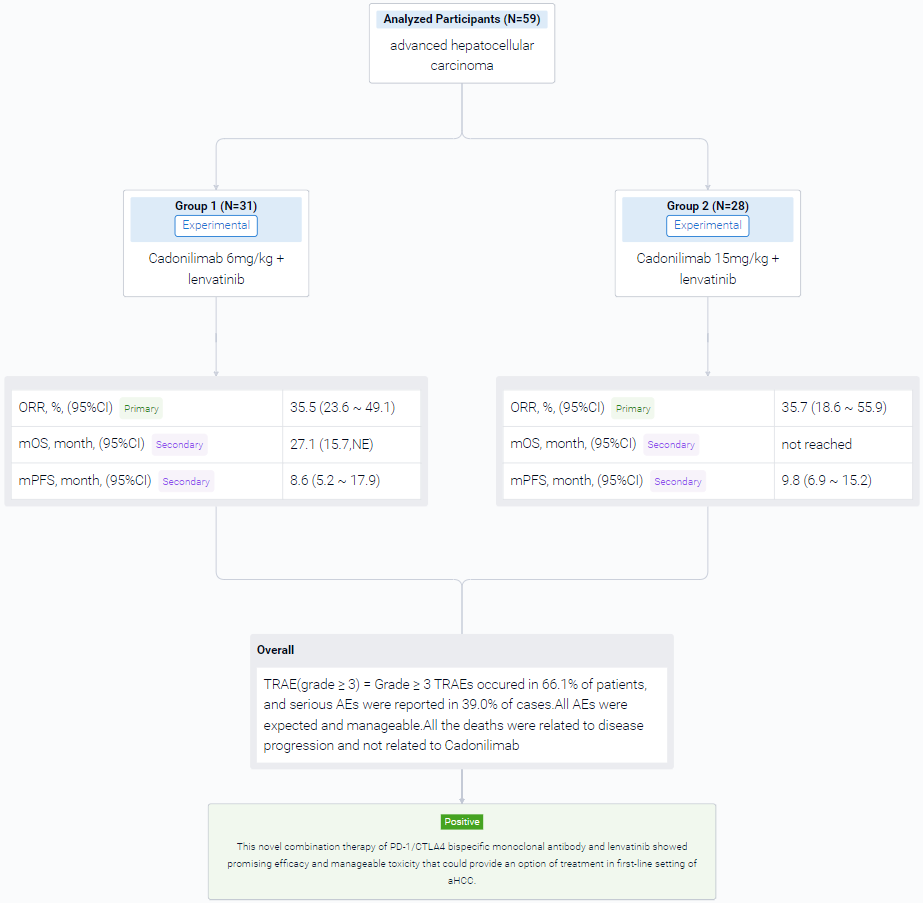
Finally, if you need to download these results, you can conveniently check the check boxes on the left side of the list, or directly click the "Export" button to download the data for personalized analysis and file sharing.
Click on the image below to embark on a brand new journey of drug discovery!
